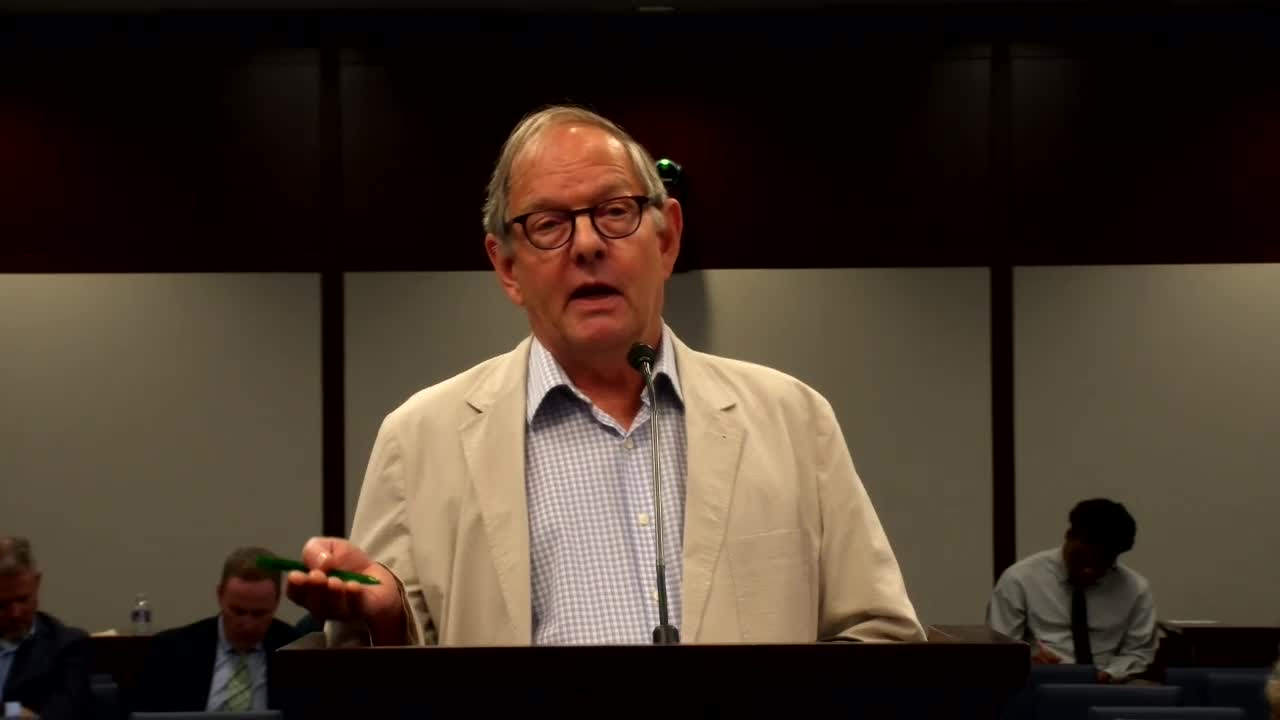Council debates Woodland Conservation Ordinance amid development and tree preservation concerns
June 09, 2025 | Prince George's County, Maryland
This article was created by AI summarizing key points discussed. AI makes mistakes, so for full details and context, please refer to the video of the full meeting. Please report any errors so we can fix them. Report an error »

At the recent Prince George County Transportation, Infrastructure, Energy, and Environment Committee meeting, a significant focus was placed on the intersection of environmental sustainability and economic development. Key discussions revolved around the need for green jobs and sustainable programs, emphasizing that trees are no longer just a luxury but a necessity for community health and economic growth.
Committee members highlighted the importance of utilizing funds to plant trees and develop green jobs, referencing economic justice maps created by the Environmental Justice Center at the University of Maryland. This initiative aims to enhance the health conditions of residents while simultaneously improving the tax base.
Matthew Tedesco, representing the law firm Macmi Hosey, addressed concerns regarding previous legislation, specifically CB20, which had unintended consequences affecting development opportunities. He advocated for a new bill that seeks to rectify these issues, particularly emphasizing the need for flexibility in development regulations to avoid rendering properties undevelopable.
Tedesco pointed out that the current "no net loss" standard for forest preservation could severely limit development, as large projects could exhaust available forest banks. He urged the committee to support the bill, which includes an in-lieu fee option for developers unable to meet on-site tree planting requirements.
Thomas Haller echoed these sentiments, stressing that the legislation should not hinder economic development, especially in areas designated for growth. He noted that the existing Woodland Conservation Ordinance could complicate redevelopment efforts, as it imposes tree planting requirements even on fully developed sites lacking woodlands.
The committee's discussions underscored a critical balancing act: fostering economic development while ensuring environmental sustainability. As the county prepares to advance this legislation, the implications for future development and community health remain a focal point for both committee members and residents alike. The anticipated outcomes of these discussions could reshape the landscape of Prince George County, making it a pivotal moment for local governance and environmental policy.
Committee members highlighted the importance of utilizing funds to plant trees and develop green jobs, referencing economic justice maps created by the Environmental Justice Center at the University of Maryland. This initiative aims to enhance the health conditions of residents while simultaneously improving the tax base.
Matthew Tedesco, representing the law firm Macmi Hosey, addressed concerns regarding previous legislation, specifically CB20, which had unintended consequences affecting development opportunities. He advocated for a new bill that seeks to rectify these issues, particularly emphasizing the need for flexibility in development regulations to avoid rendering properties undevelopable.
Tedesco pointed out that the current "no net loss" standard for forest preservation could severely limit development, as large projects could exhaust available forest banks. He urged the committee to support the bill, which includes an in-lieu fee option for developers unable to meet on-site tree planting requirements.
Thomas Haller echoed these sentiments, stressing that the legislation should not hinder economic development, especially in areas designated for growth. He noted that the existing Woodland Conservation Ordinance could complicate redevelopment efforts, as it imposes tree planting requirements even on fully developed sites lacking woodlands.
The committee's discussions underscored a critical balancing act: fostering economic development while ensuring environmental sustainability. As the county prepares to advance this legislation, the implications for future development and community health remain a focal point for both committee members and residents alike. The anticipated outcomes of these discussions could reshape the landscape of Prince George County, making it a pivotal moment for local governance and environmental policy.
View full meeting
This article is based on a recent meeting—watch the full video and explore the complete transcript for deeper insights into the discussion.
View full meeting
